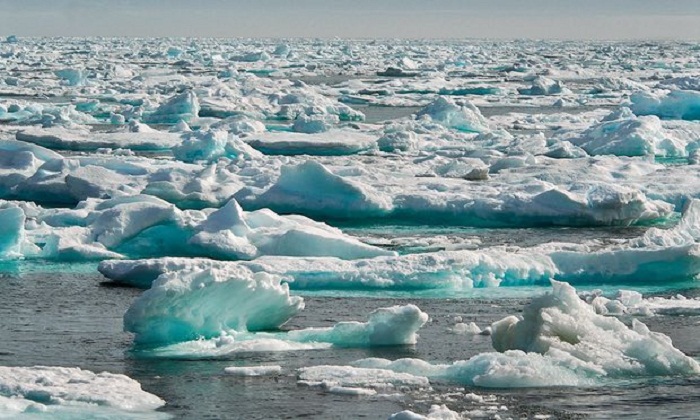That is a much starker prospect than even the worst-case scientific scenario proposed so far, which does not see the Atlantic ocean current shutdown happening for several hundred years at least.
A scenario even more drastic (but fortunately fictional) was the subject of the 2004 US movie The Day After Tomorrow, which portrayed the disruption of the North Atlantic’s circulation leading to global cooling and a new Ice Age.
To evaluate the risk of extreme climate change, researchers from the Environnements et Paléoenvironnements Océaniques et Continentaux laboratory (CNRS/University of Bordeaux, France), and the University of Southamptondeveloped an algorithm to analyse the 40 climate models considered by the Fifth Assessment Report.
The findings by the British and French team, published in the Nature Communications journal, in sharp contrast to the IPCC, put the probability of rapid North Atlantic cooling during this century at almost an even chance – nearly 50%.
Current climate models foresee a slowing of the meridional overturning circulation (MOC), sometimes known also as the thermohaline circulation, which is the phenomenon behind the more familiar Gulf Stream that carries warmth from Florida to European shores. If it did slow, that could lead to a dramatic, unprecedented disruption of the climate system.
In 2013, drawing on 40 climate change projections, the IPCC judged that this slowdown would occur gradually, over a long period. Its findings suggested that fast cooling of the North Atlantic during this century was unlikely.
But oceanographers from EU emBRACE had also re-examined the 40 projections by focusing on a critical spot in the northwest of the North Atlantic: the Labrador Sea.
The Labrador Sea is host to a convection system ultimately feeding into the ocean-wide MOC. The temperatures of its surface waters plummet in the winter, increasing their density and causing them to sink. This displaces deep waters, which bring their heat with them as they rise to the surface, preventing the formation of ice caps.
The algorithm developed by the Anglo-French researchers was able to detect quick sea surface temperature variations. With it they found that seven of the 40 climate models they were studying predicted a total shutdown of convection, leading to abrupt cooling of the Labrador Sea by 2C to 3C over less than 10 years. This in turn would drastically lower North Atlantic coastal temperatures.
But because only a handful of the models supported this projection, the researchers focused on the critical parameter triggering winter convection: ocean stratification. Five of the models that included stratification predicted a rapid drop in North Atlantic temperatures.
The researchers say these projections can one day be tested against real data from the international OSnap project, whose teams will be anchoring scientific instruments within the sub-polar gyre (a gyre is any large system of circulating ocean currents).
If the predictions are borne out and the North Atlantic waters do cool rapidly over the coming years, the team says, with considerable understatement, climate change adaptation policies for regions bordering the North Atlantic will have to take account of this phenomenon.
/Guardian/
More about:
















































